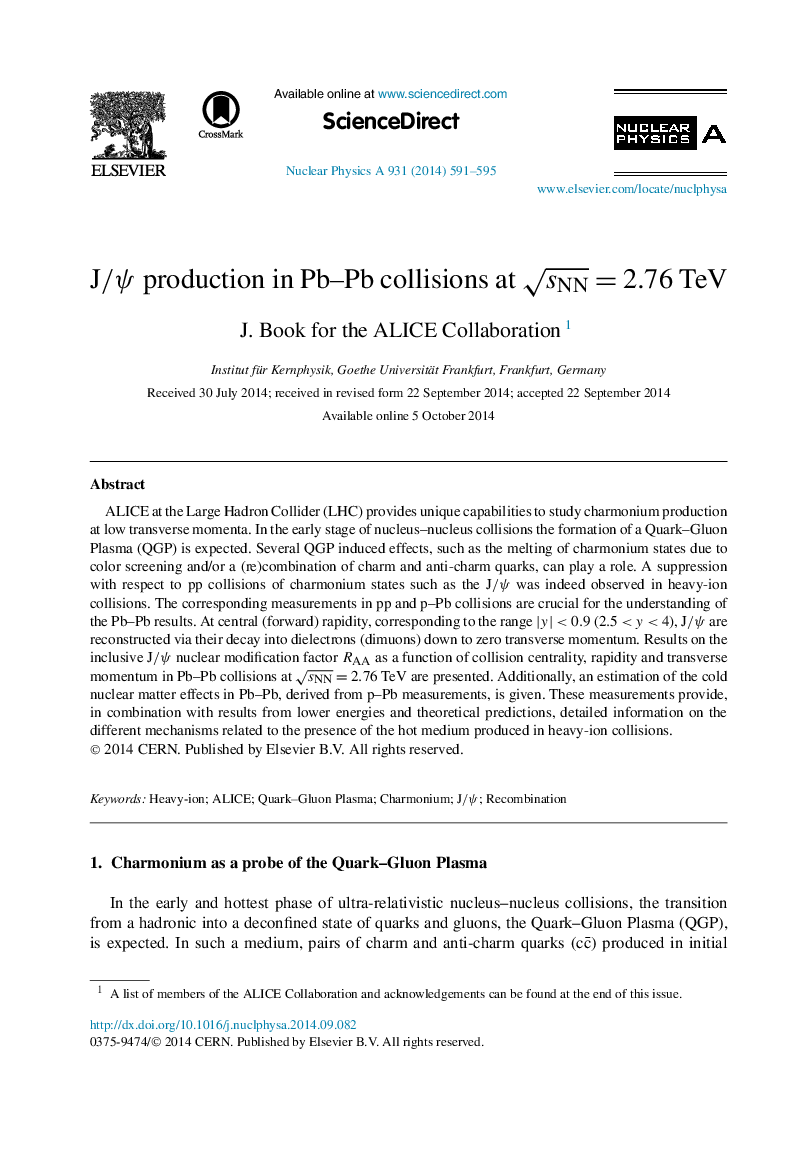| Article ID | Journal | Published Year | Pages | File Type |
|---|---|---|---|---|
| 1836507 | Nuclear Physics A | 2014 | 5 Pages |
Abstract
ALICE at the Large Hadron Collider (LHC) provides unique capabilities to study charmonium production at low transverse momenta. In the early stage of nucleus–nucleus collisions the formation of a Quark–Gluon Plasma (QGP) is expected. Several QGP induced effects, such as the melting of charmonium states due to color screening and/or a (re)combination of charm and anti-charm quarks, can play a role. A suppression with respect to pp collisions of charmonium states such as the J/ψ was indeed observed in heavy-ion collisions. The corresponding measurements in pp and p–Pb collisions are crucial for the understanding of the Pb–Pb results. At central (forward) rapidity, corresponding to the range |y|<0.9|y|<0.9 (2.5
Related Topics
Physical Sciences and Engineering
Physics and Astronomy
Nuclear and High Energy Physics
Authors
J. Book,
